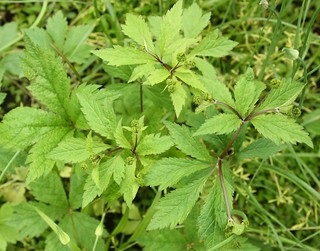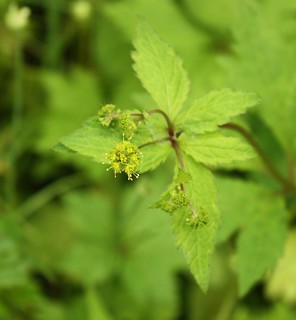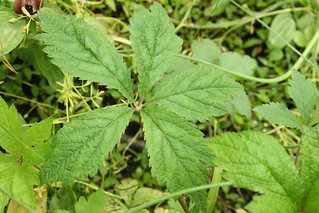
(Click on images to enlarge)
The parts are undistinguished, I will grant him that. They are also tiny, and the plant grows in shady places, all of which makes the blossoms hard to photograph.
I went back a few days later and tried to get a photo of one in bloom. This is the best I could do:

I wasn't too sure about the arrangement of the leaves, either. Newcomb considers them alternate, divided. So here's one leaf, divided into five leaflets:

All that trouble just to identify a wildflower that isn't very interesting. It's not even poisonous, unlike white snakeroot — or if it is, nobody has bothered to mention that fact.
More here.


No comments:
Post a Comment